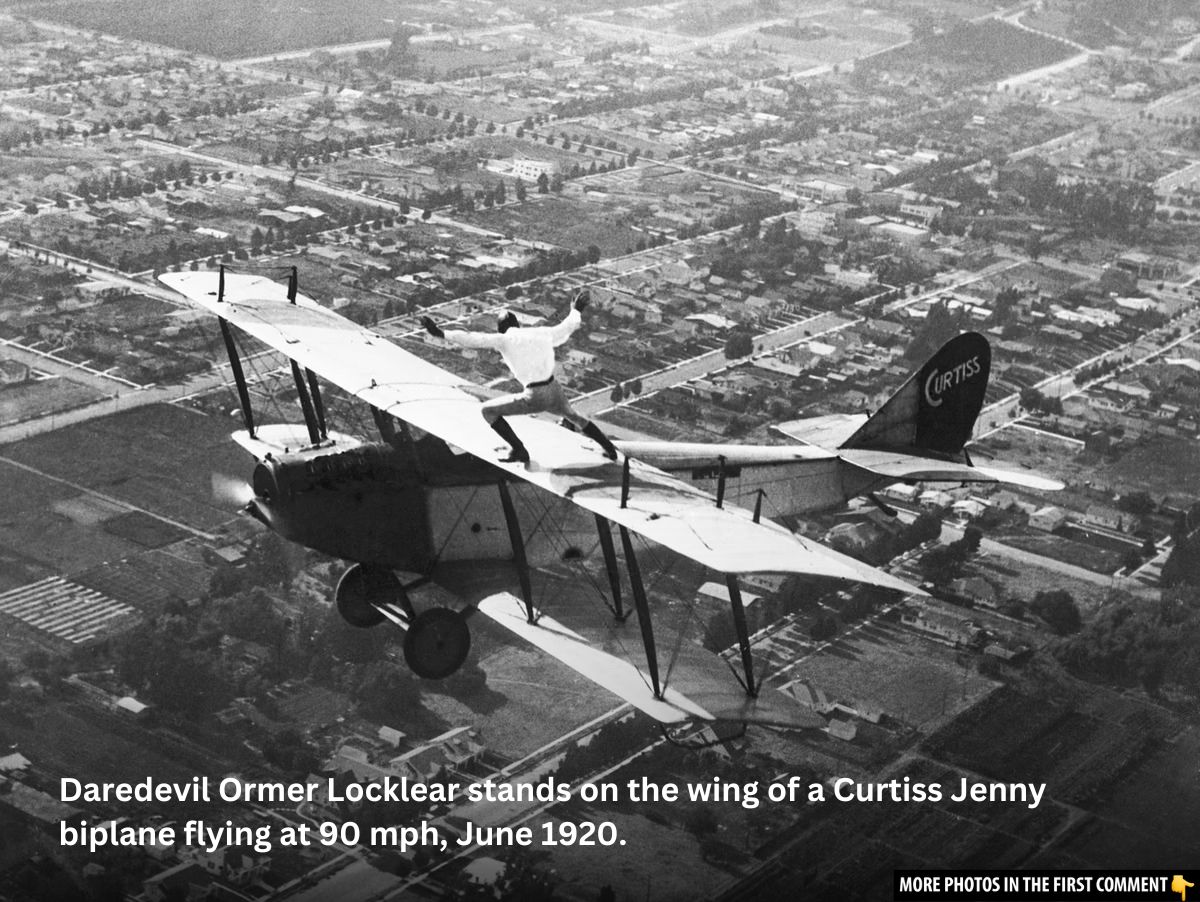In the early 20th century, a daring group of aviators defied death in the most spectacular way—by walking on the wings of planes mid-flight. Wing walking, which began as a stunt in the 1920s, soon became a popular form of entertainment, captivating audiences with heart-stopping performances. These fearless men and women, performing gravity-defying tricks while soaring through the skies, became legends of their time. Today, stunning historical photos capture the bravery of these pioneers, immortalizing their daring feats and the golden age of aerial stunts.
The Early Pioneers: Ormer Locklear and the Beginnings of Wing Walking
Ormer Locklear is often credited as one of the first to take wing walking from a mechanical demonstration to a full-fledged stunt. Initially, the act of wing walking was meant to showcase the balance and stability of aircraft during barnstorming airshows. However, as pilots and performers began to test their limits, the once-simple stunts evolved into jaw-dropping acrobatics.
In the mid-1920s, Locklear, an American aviator, would often walk on the wings of his aircraft during training to make in-flight repairs without landing. He soon became one of the first daredevils to take wing walking to the skies during public exhibitions, performing stunts that included walking on the wings while the aircraft was in motion. Sadly, Locklear would meet a tragic fate during a stunt, highlighting the perilous nature of wing walking in its infancy. His early contributions, however, laid the groundwork for a generation of wing walkers who would follow in his footsteps.
The Rise of Female Wing Walkers
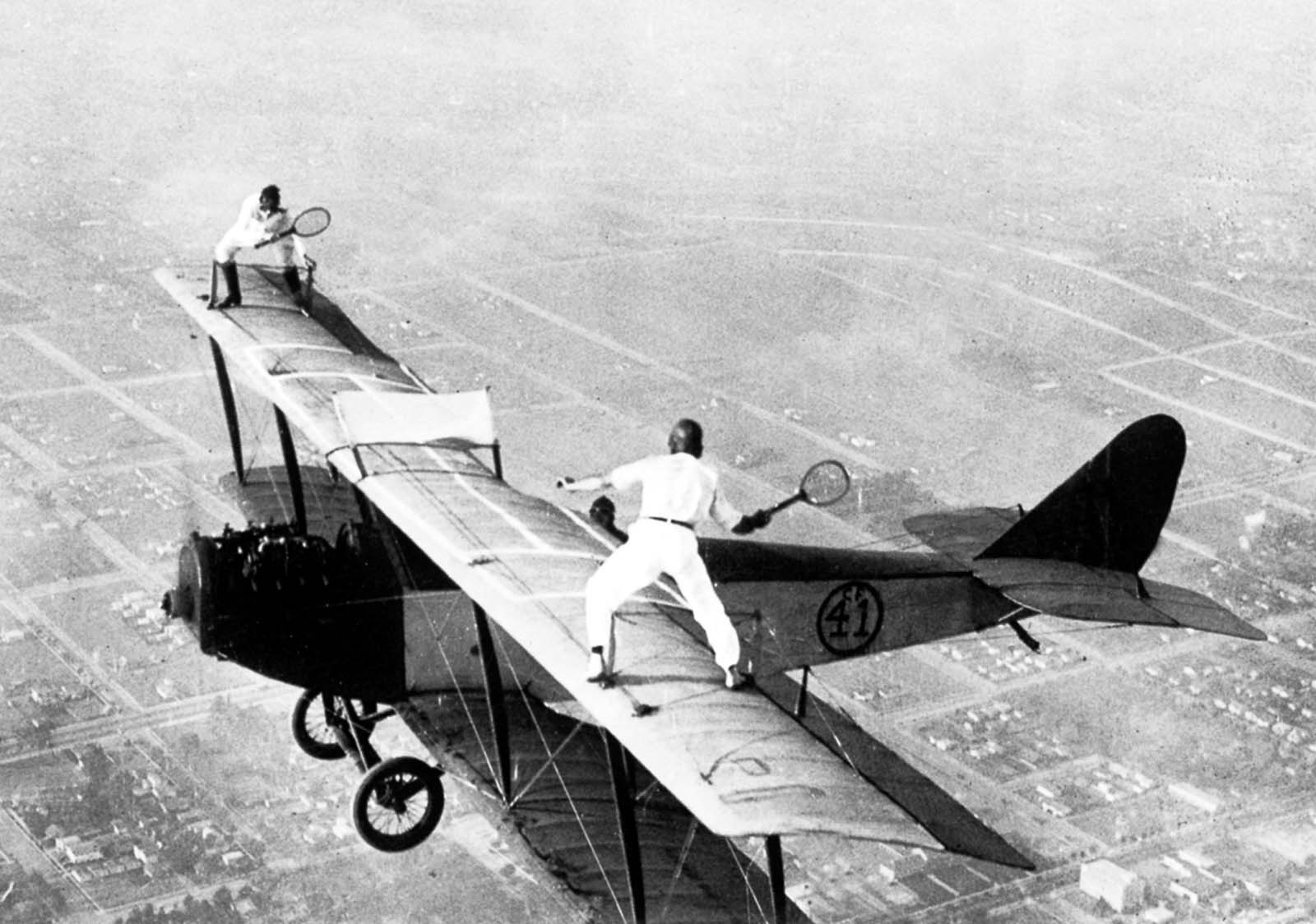
Though wing walking was initially dominated by male aviators, women soon made their mark in this thrilling profession. Among the most famous female wing walkers were Gladys Roy, Lillian Boyer, and Virginia Angel. These women not only defied the societal norms of their time but also showcased exceptional skill and fearlessness while perched on the wings of biplanes.
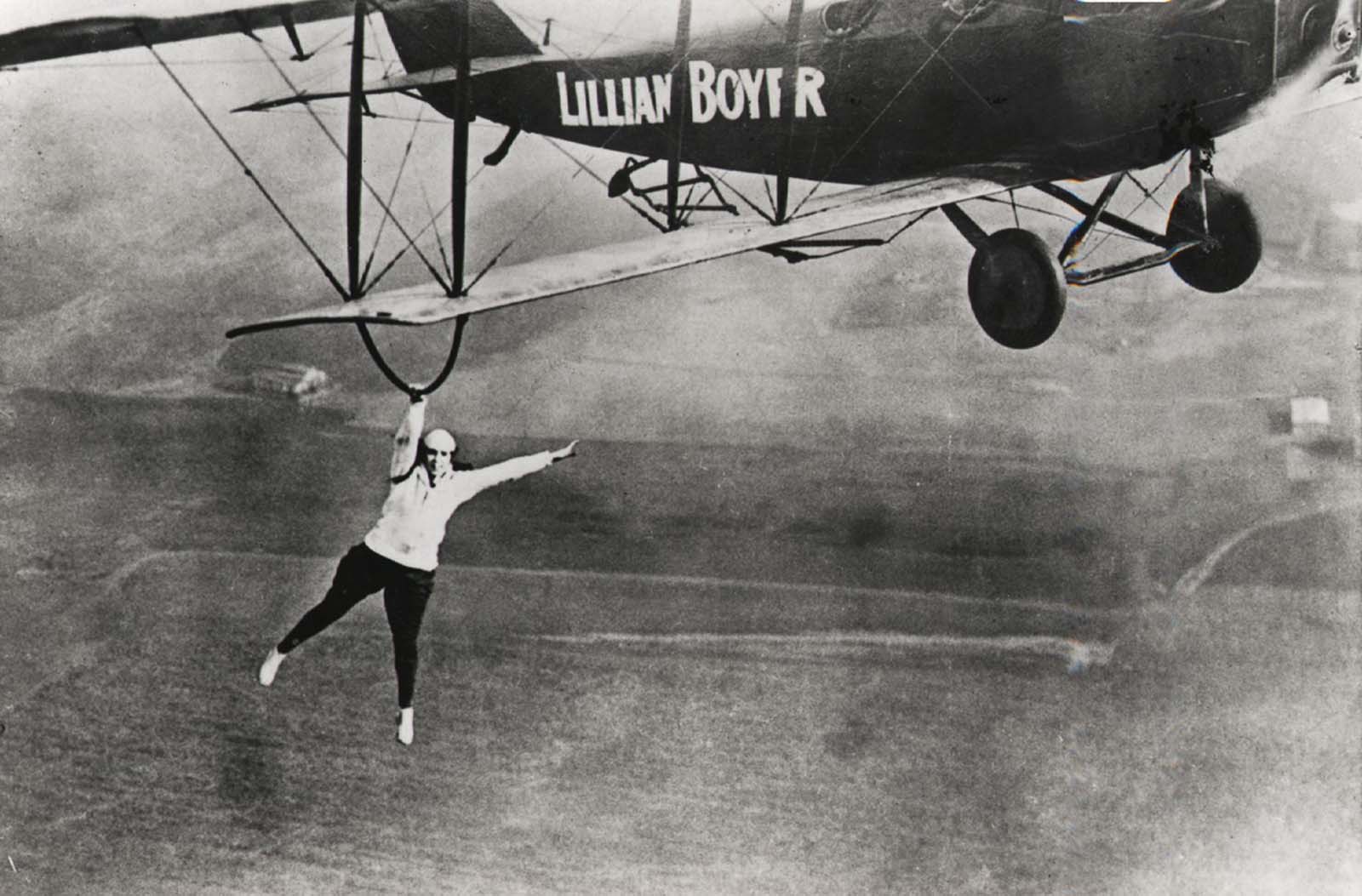
Lillian Boyer, in particular, became renowned for her performances in which she would perform hundreds of wing-walking exhibitions, automobile-to-plane changes, and even parachute jumps. Boyer’s ability to balance grace with daring stunts made her one of the most celebrated performers in aerial stunt history. Her legacy, alongside other women like Gladys Roy and Jessie Woods, helped prove that the sky was not just a man’s domain but a stage for all who dared to challenge its limits.
Video
Watch the video to see crazy 1920s airplane stunts from the barnstorming era! Don’t miss these thrilling feats of aerial daredevilry.
The Golden Age of Wing Walking (1920s-1930s)
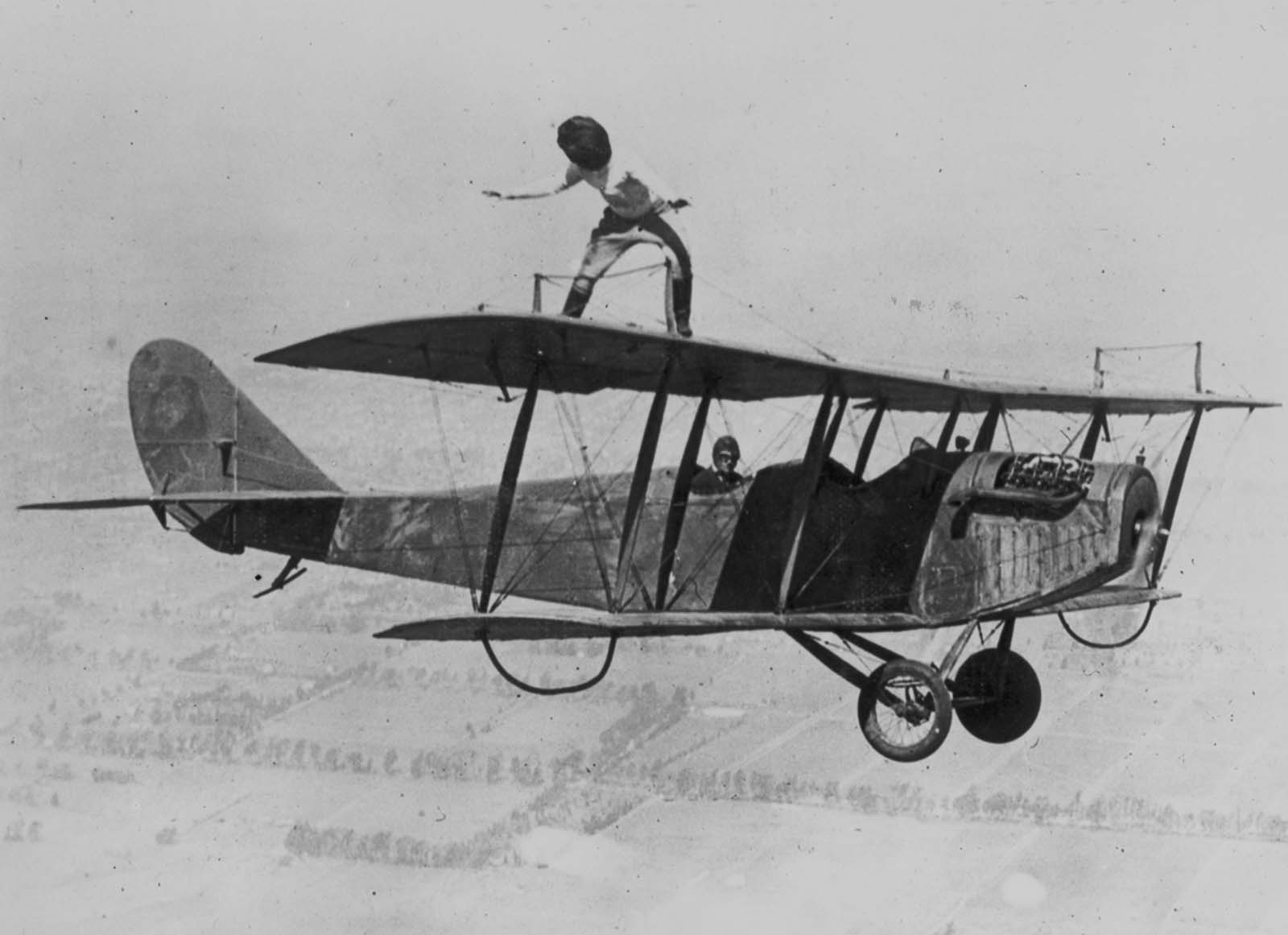
The 1920s and 1930s marked the golden age of wing walking. As airplanes became more stable and reliable, wing walkers began to attempt even more complex stunts. From handstands on the wings to transferring between aircraft mid-flight, the stunts became increasingly perilous. The aerial barnstorming shows that featured wing walkers drew huge crowds, and performers began to gain notoriety for their feats.
Wing walkers were also seen as celebrities, with many even performing in movies. These aerialists, like Charles Lindbergh, who is famous for his solo transatlantic flight, began their careers in wing walking before making their names in other areas of aviation. These stunts captured the imagination of the public and fueled the growing love affair with aviation that would define the next century.
The Risks and Fatalities: Deaths in the Early Years
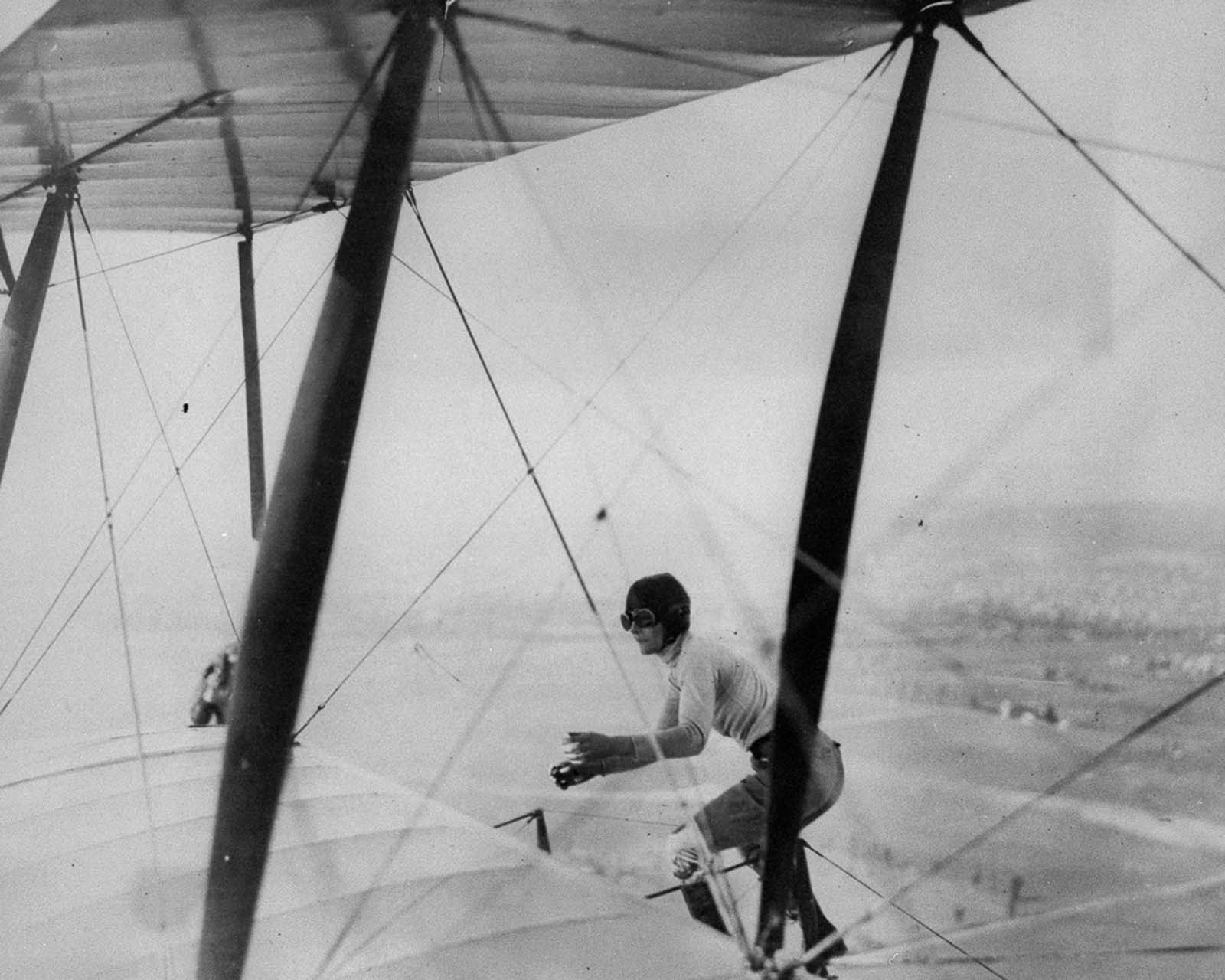
As thrilling as wing walking was, it came with significant risks. The stunts were not without their fatalities, and several wing walkers lost their lives while performing death-defying acts. Ormer Locklear’s tragic death during a stunt in 1920s marked just one of many fatalities in the early years of wing walking.
The absence of safety measures like parachutes and harnesses meant that a slip or fall could lead to certain death. In fact, eight wing walkers died within a short period during the infancy of this dangerous art form, and their deaths raised serious concerns about the safety of the practice.
Despite these risks, the allure of wing walking remained. Performers like Gladys Ingle and Eddie Angel were undeterred by the danger, and their acts continued to thrill audiences. The risks of the profession became a part of the spectacle itself, as the crowd would watch in awe, knowing that they were witnessing a potential life-or-death moment.
Regulations and the Decline of the Wing-Walking Era
In 1938, the U.S. authorities implemented safety regulations that required wing walkers to wear parachutes. This was a direct response to the growing number of accidents and fatalities. While the introduction of parachutes added a layer of safety, it also marked the beginning of the decline of the golden age of wing walking.
By the 1940s, as World War II escalated, the demand for aerial stunts dwindled, and the age of wing walking in its traditional form came to an end. The introduction of safer aviation techniques and technologies, as well as the rising interest in military aviation, overshadowed the once-popular stunt.
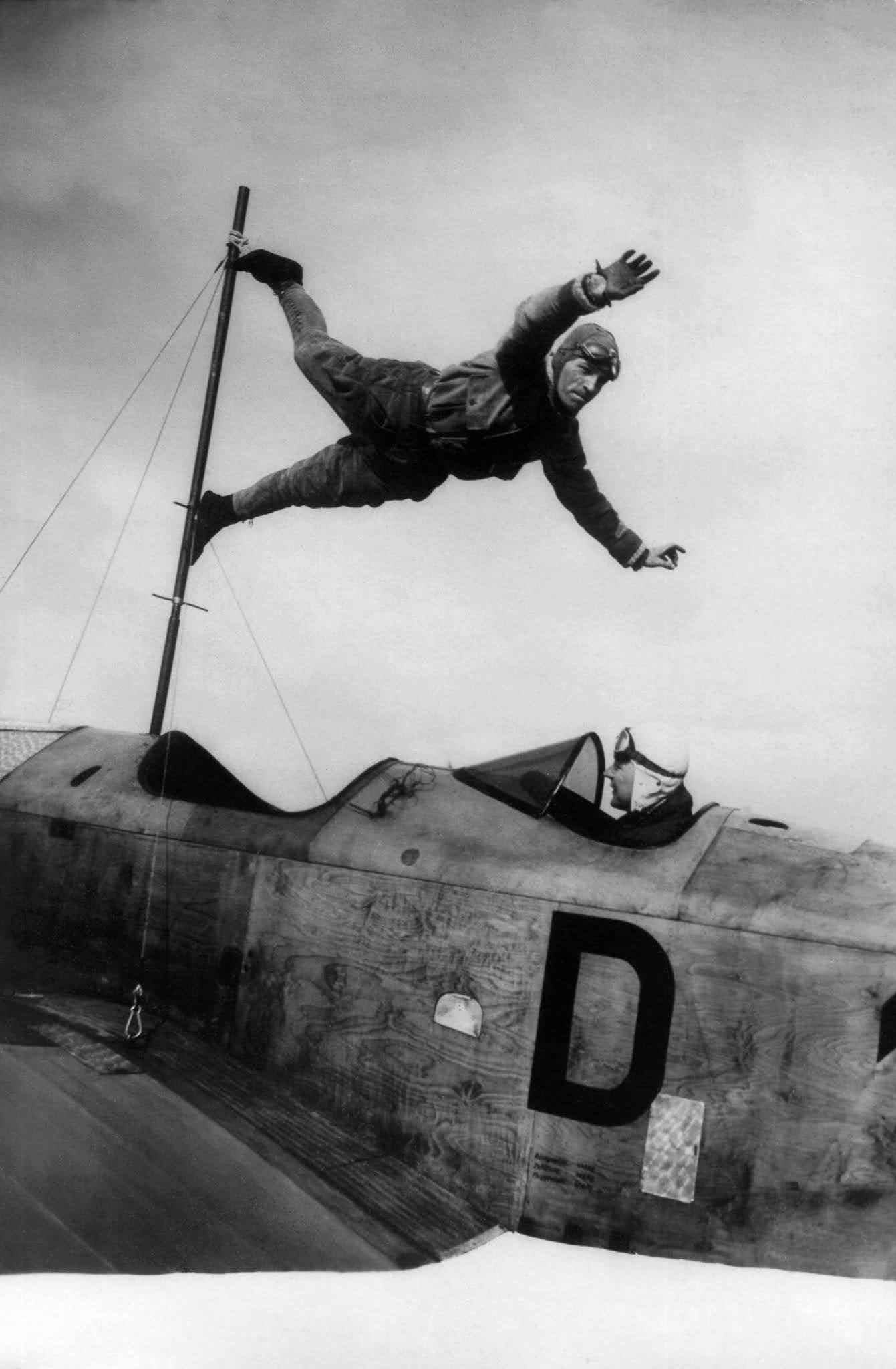
Wing Walking Today: A Revival in Modern Times
Though the golden age of wing walking has passed, the practice is far from forgotten. Today, vintage biplanes are still used in wing-walking performances, often as part of airshows or historical exhibitions. Modern wing walkers, while still skilled and brave, now perform their stunts with more advanced safety measures in place, including harnesses and safety rigs. Yet, the spirit of the pioneers remains alive, as they continue to defy gravity and wow audiences with their audacity and talent.
Some performances even seek to preserve the legacy of early wing walkers, often restoring vintage biplanes and staging performances to honor the daring aviators of the past. Though not as widely practiced as it once was, wing walking remains a thrilling tribute to the history of aviation and the fearless individuals who helped define it.
Gallery of Iconic Wing Walking Moments
The daring and death-defying moments of the original wing walkers are immortalized in photographs, capturing their bravery in the skies. These stunning images, showcasing famous performers like Gladys Ingle, Lillian Boyer, and others, serve as a testament to the daring spirit of the early aviators who took wing walking to new heights. From handstands on the wings to the iconic aerial stunts performed by pioneers, the photos bring to life the breathtaking feats of these early pioneers.
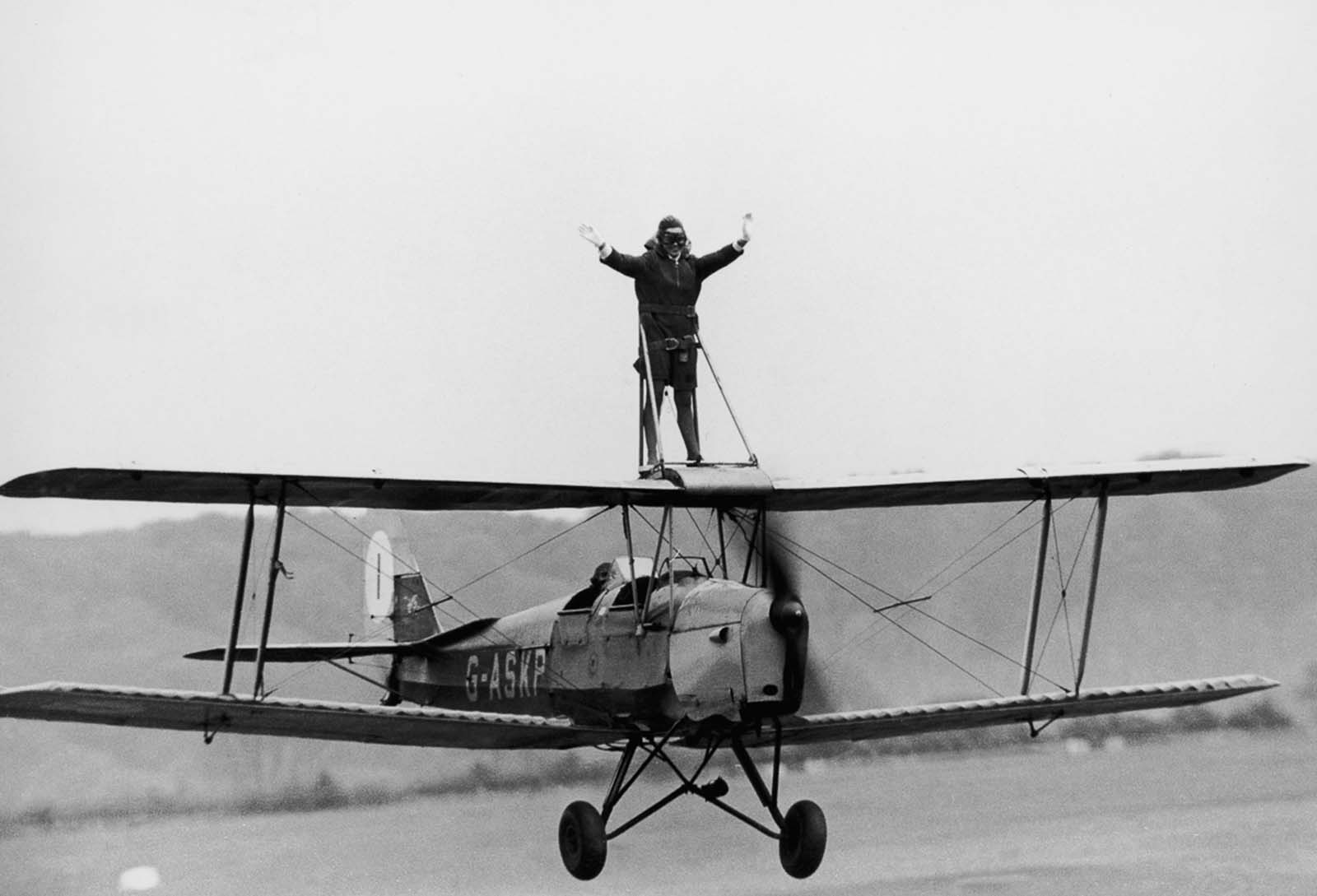
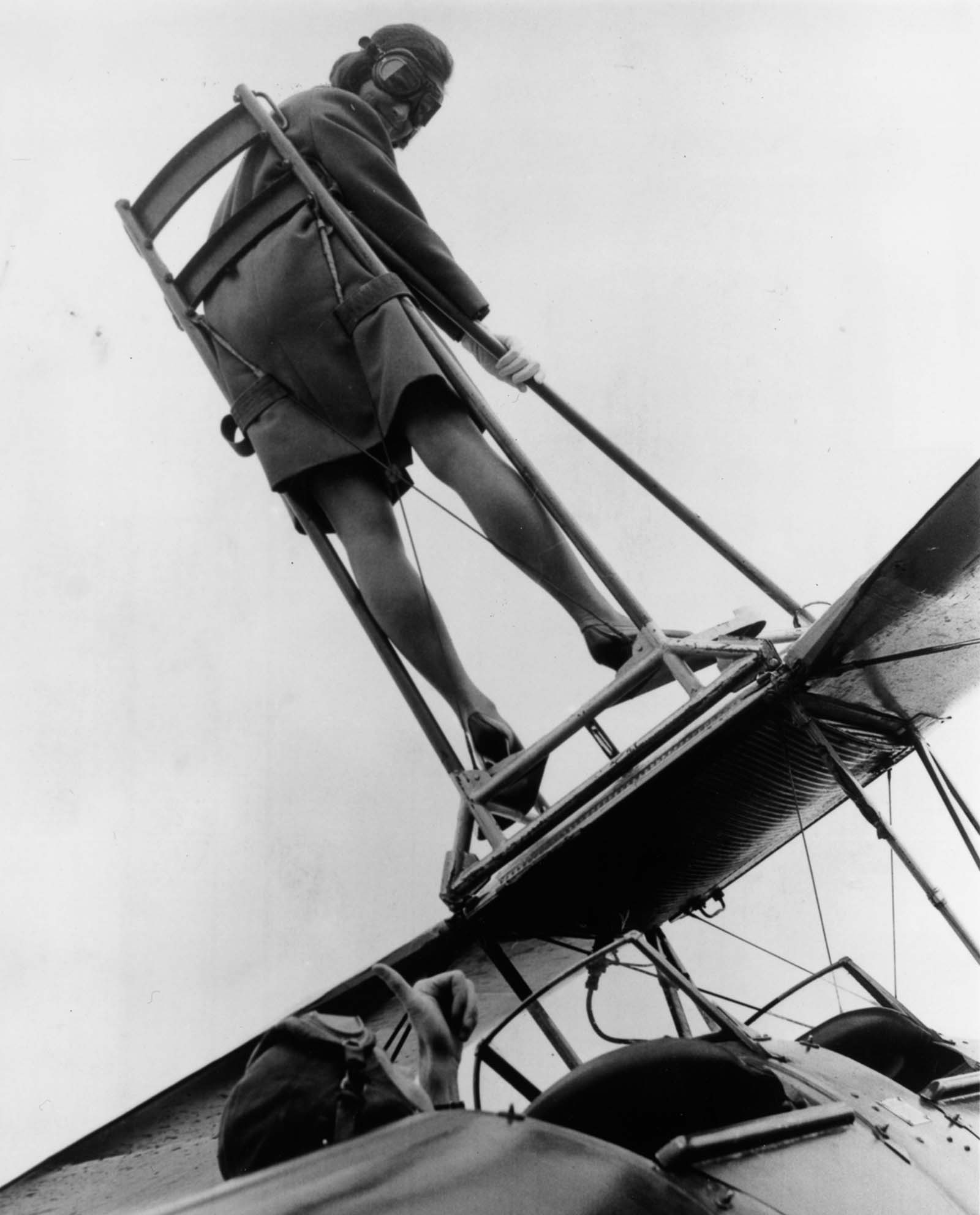
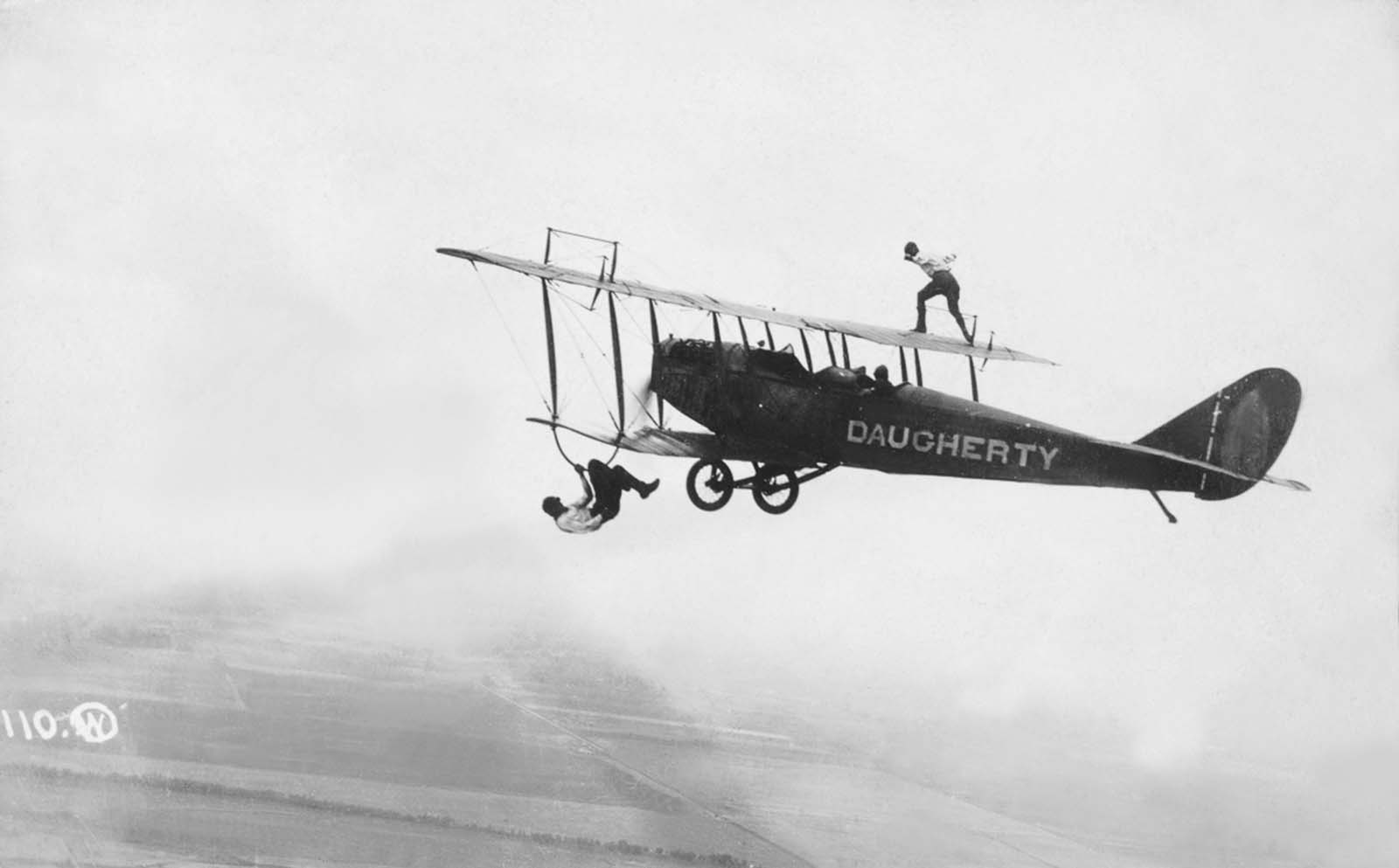
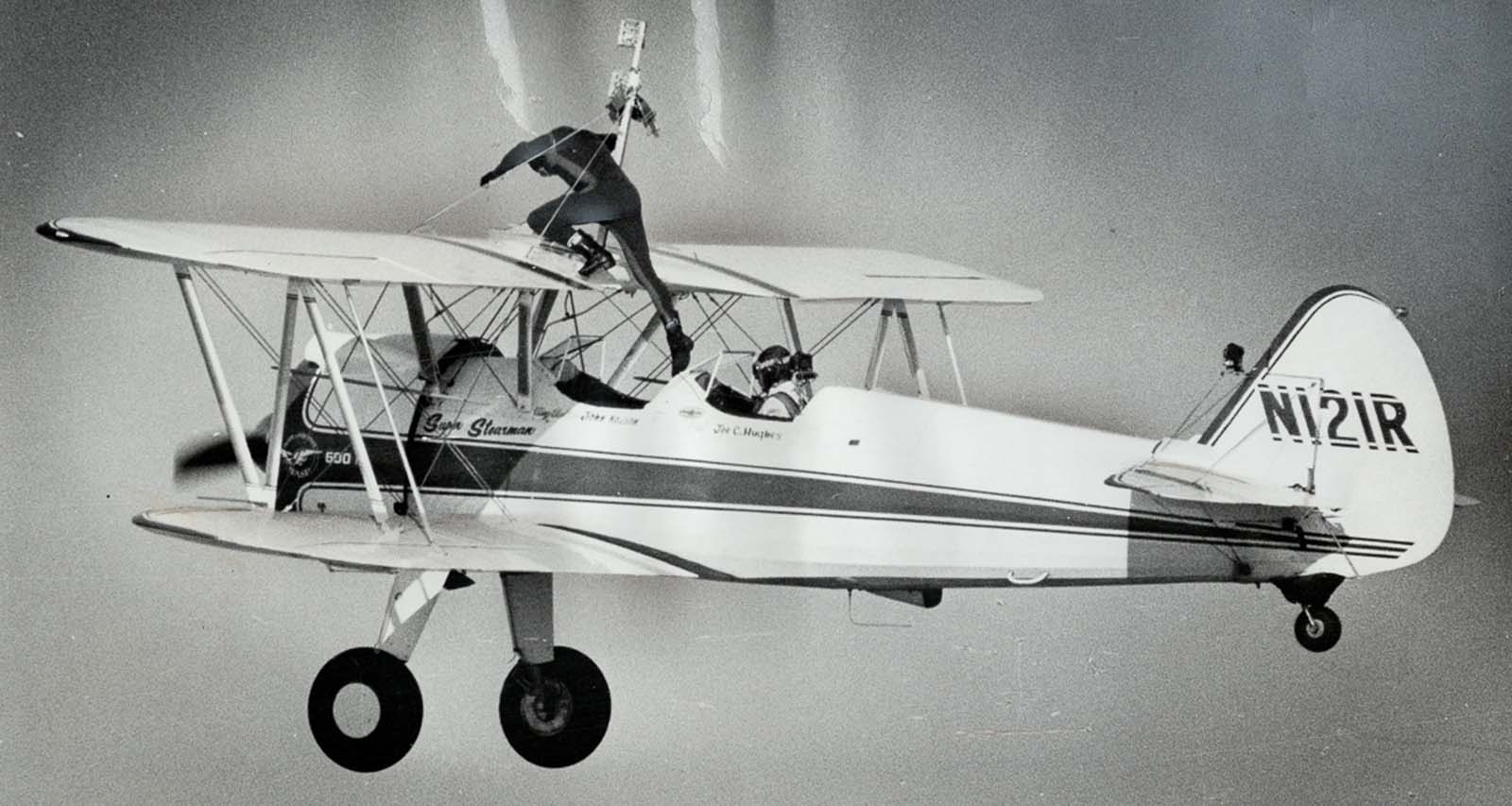
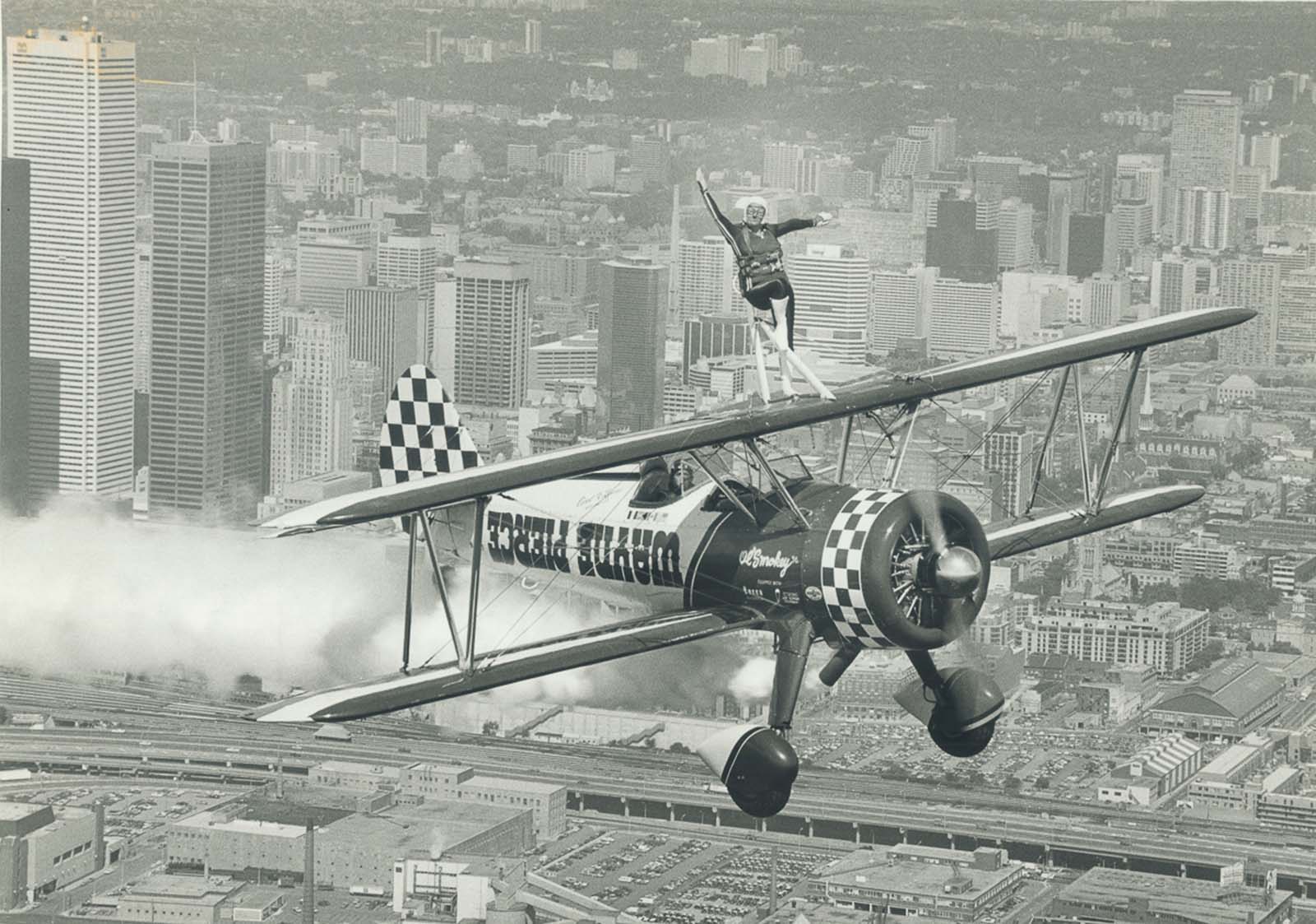
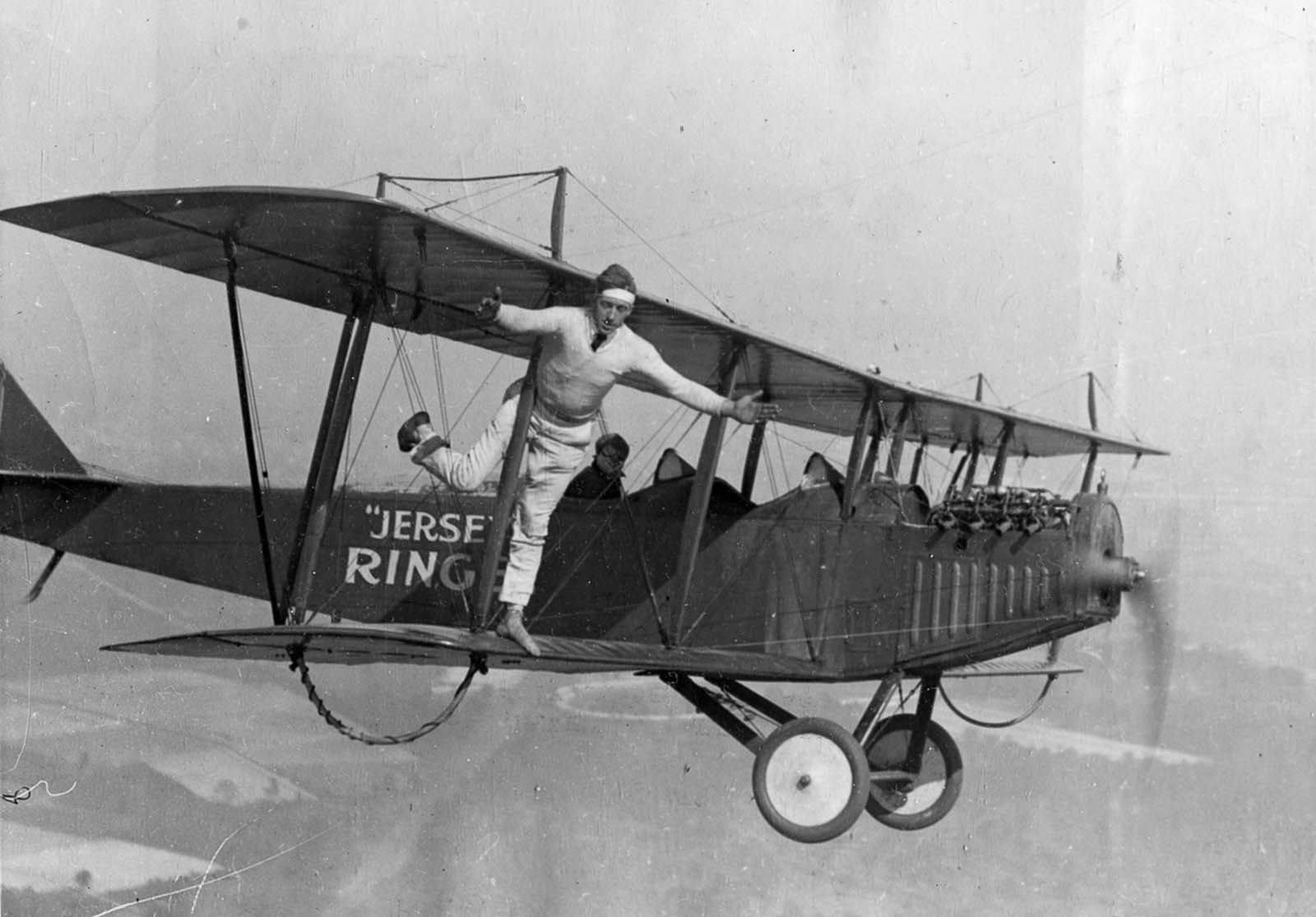
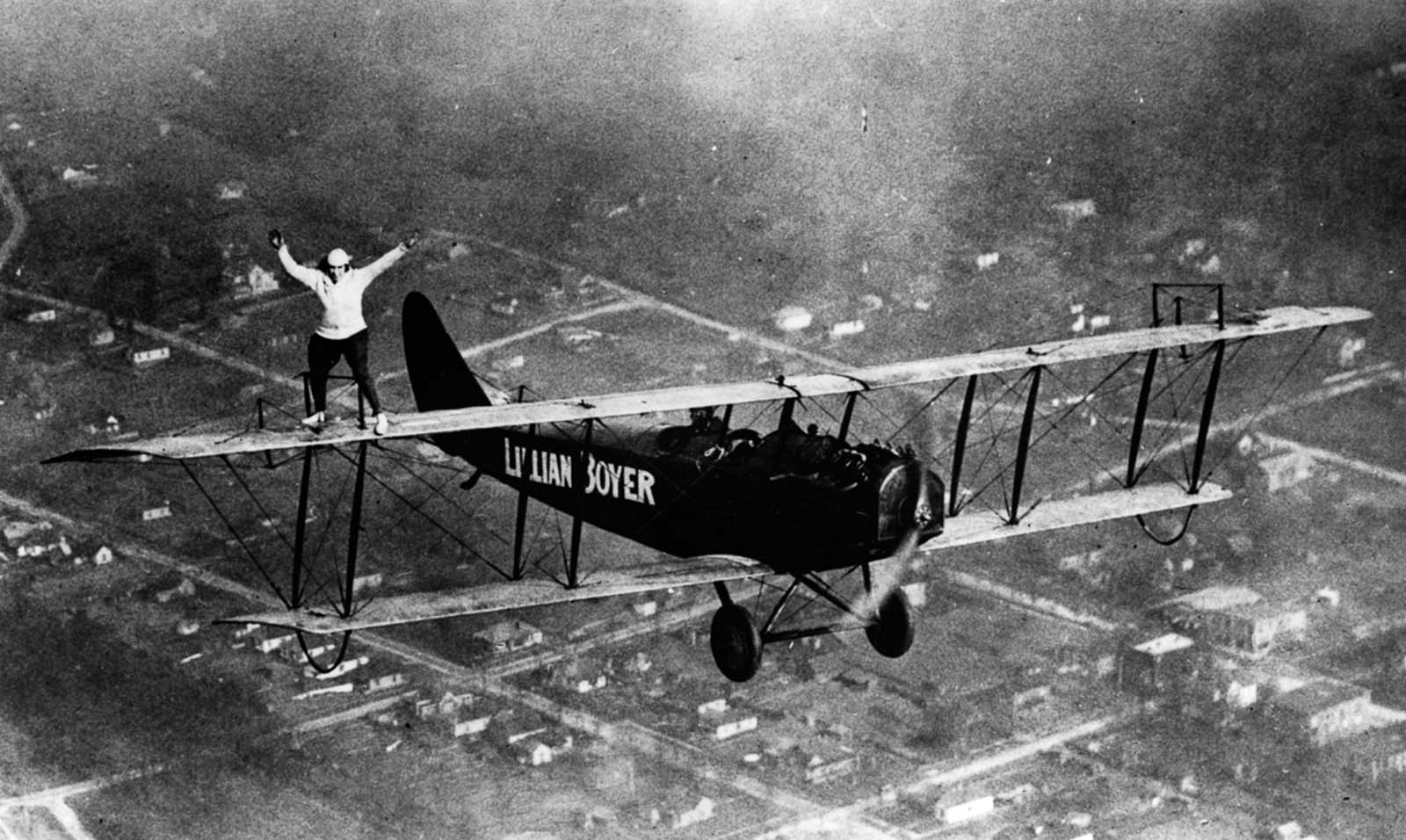

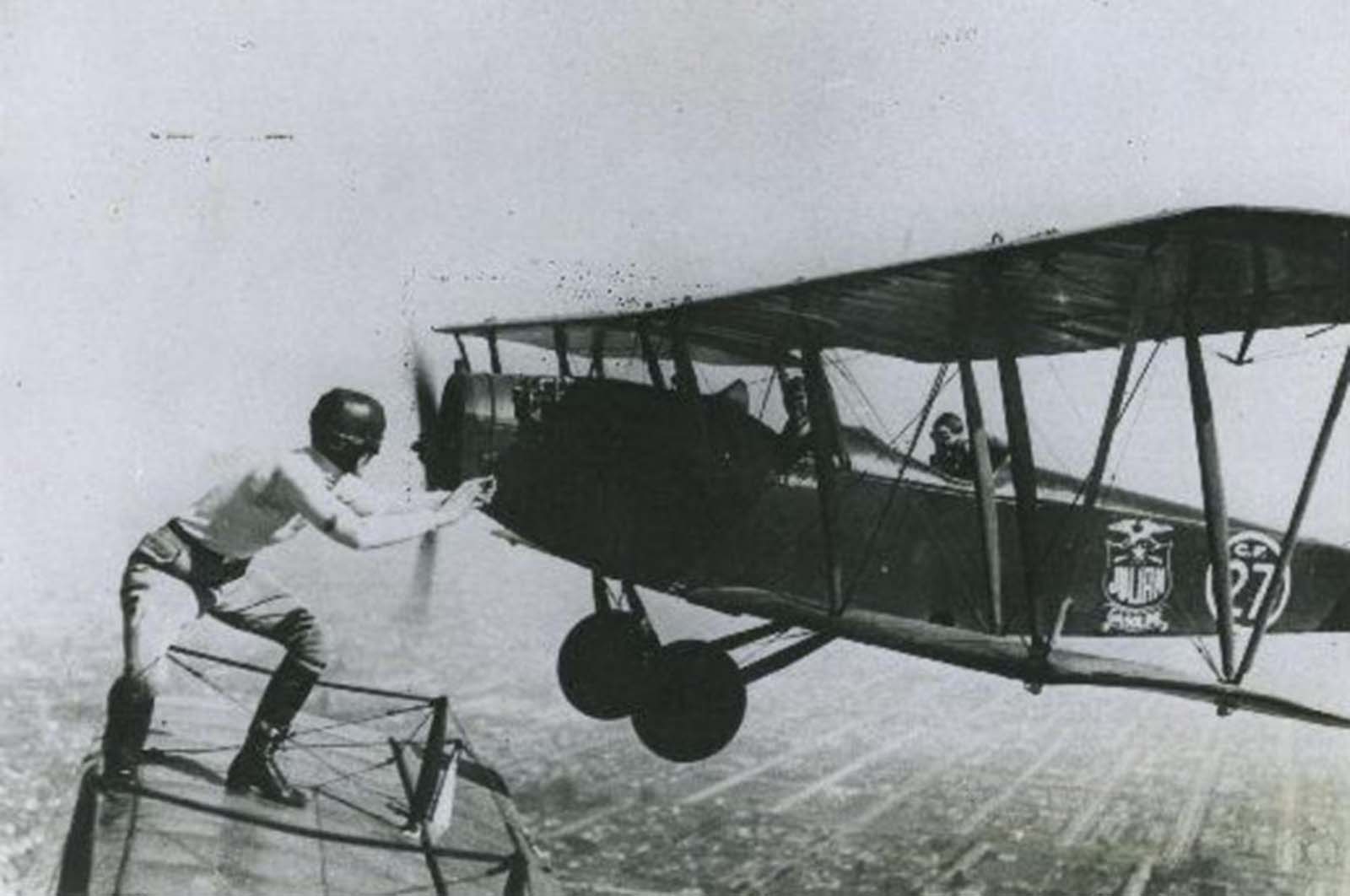
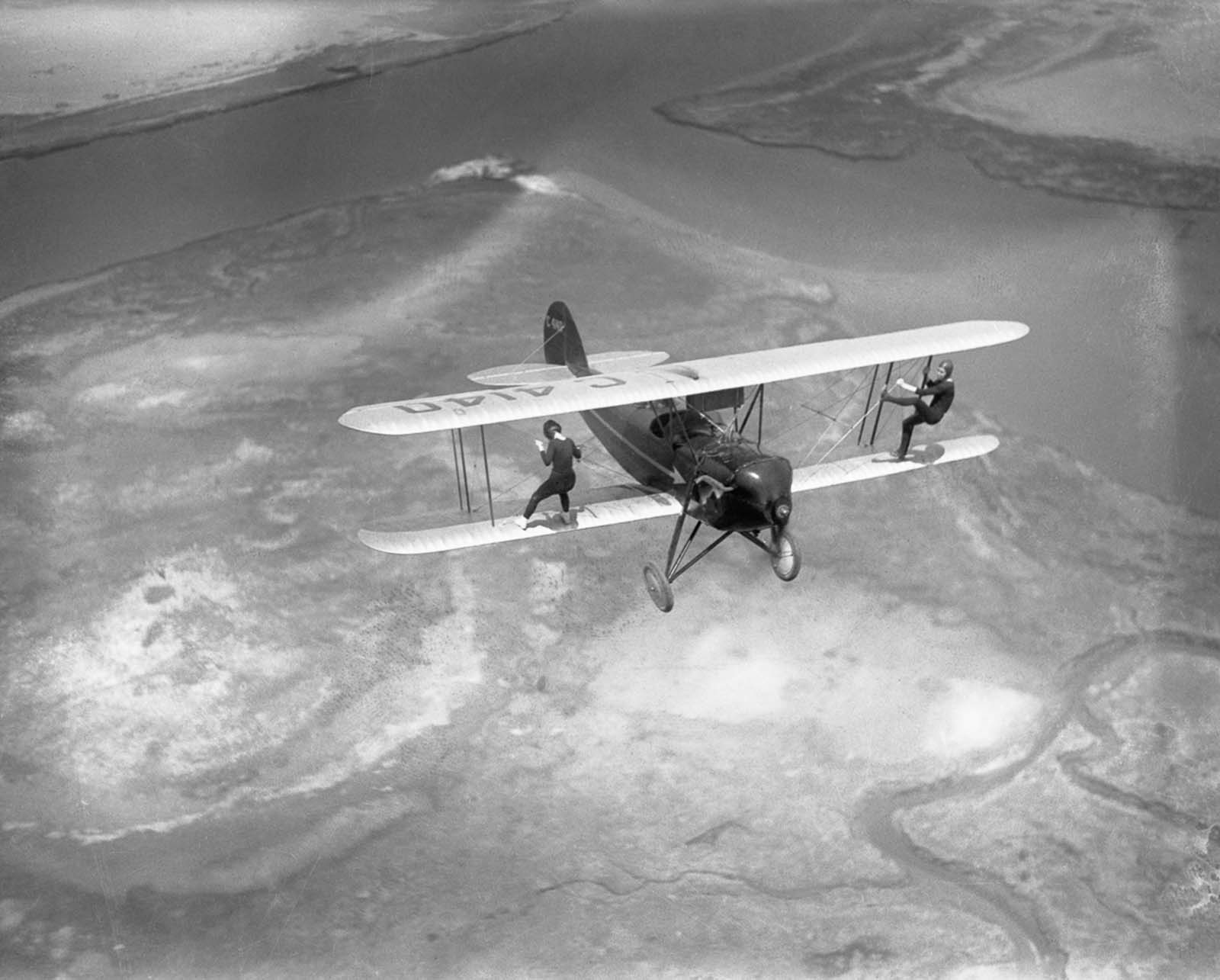
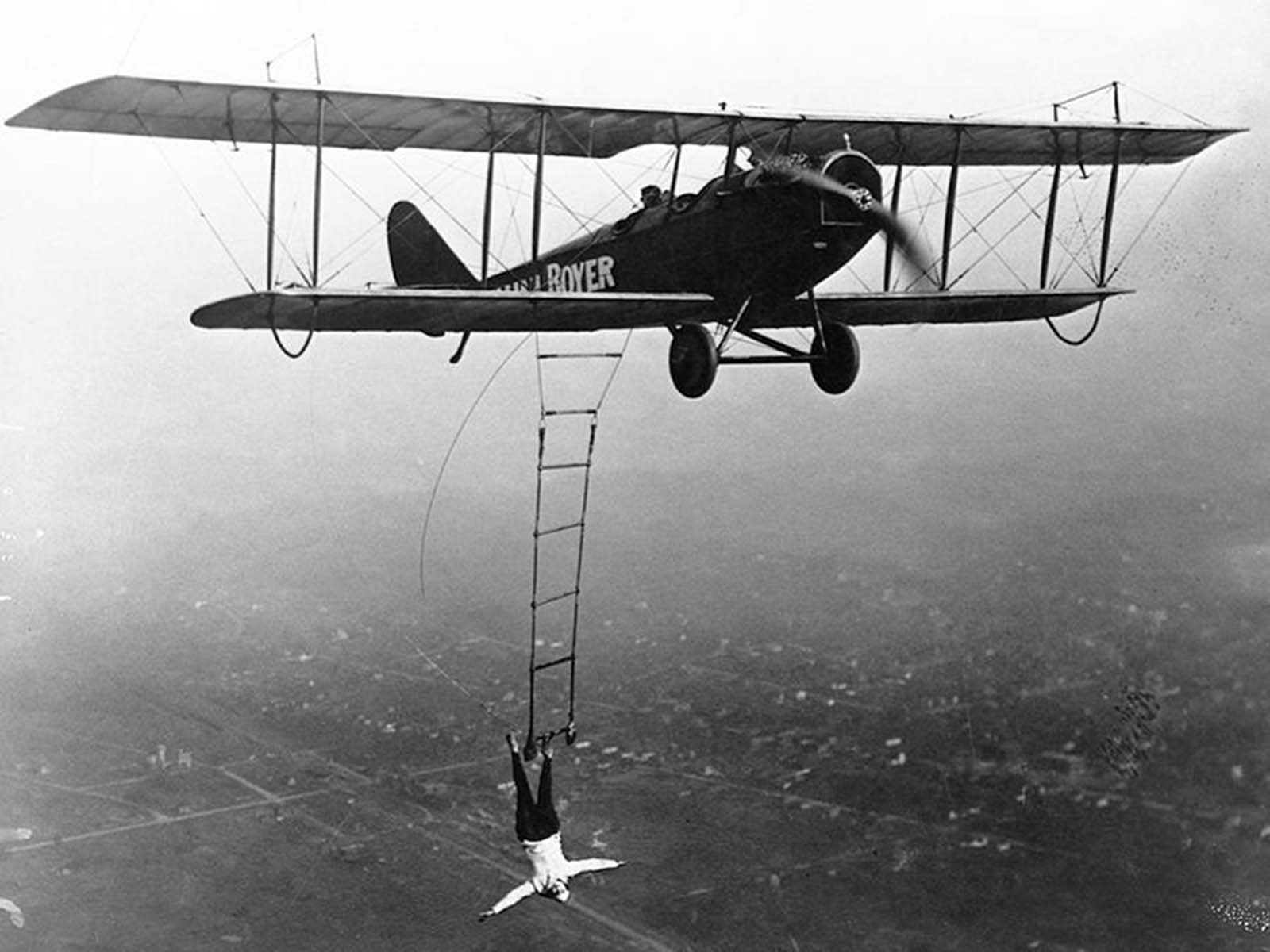
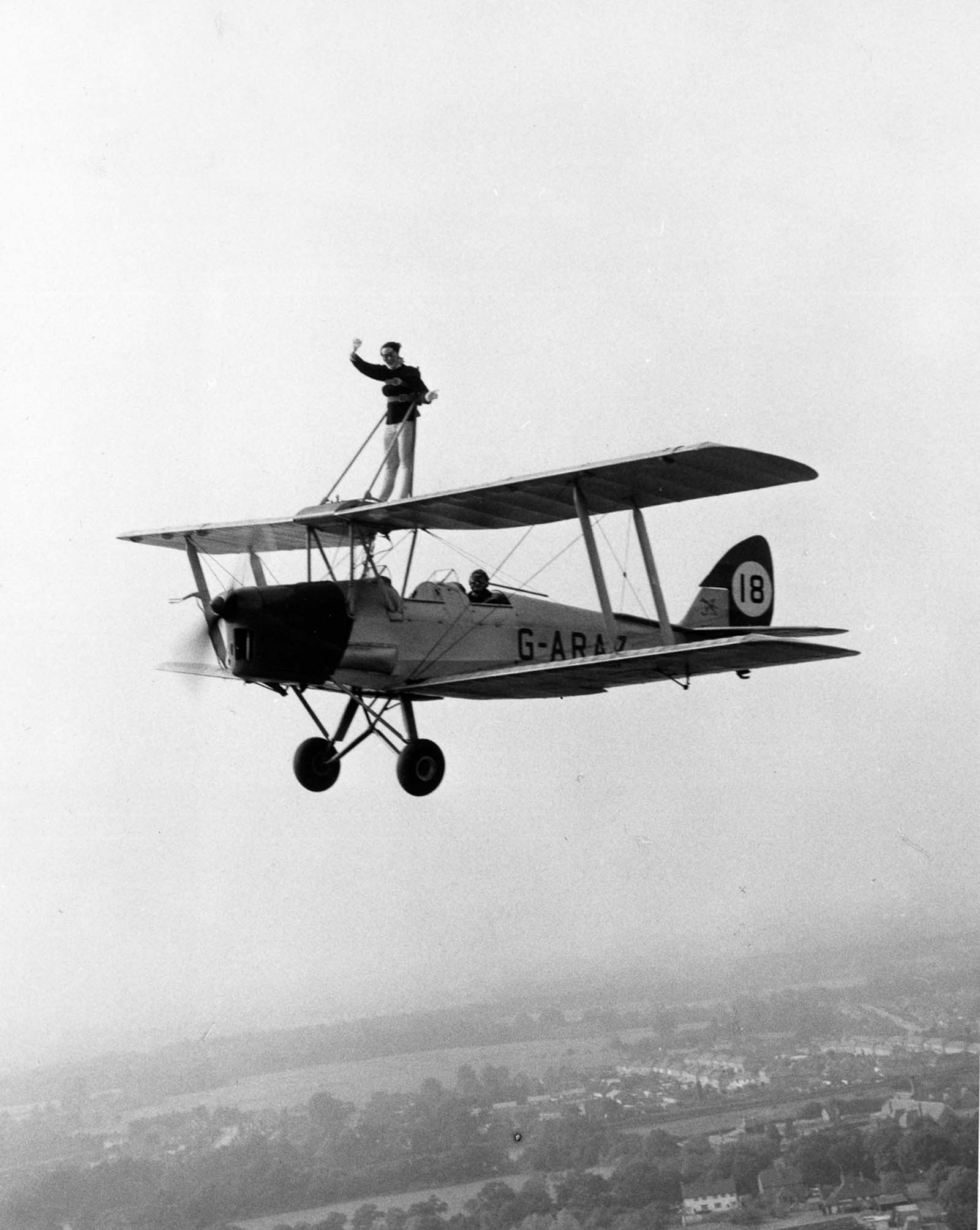
Video
Watch the video to experience air thrills from 1920-1929! Don’t miss this exciting look at the daring aviation feats of the roaring twenties.
Conclusion: The Enduring Legacy of Wing Walking
Wing walking, as dangerous and exhilarating as it was, played an integral role in the development of aviation culture in the early 20th century. The pioneering wing walkers, both male and female, set the stage for future advancements in aviation while captivating audiences with their audacity. Though the practice is no longer as widespread, the legacy of these aerial daredevils lives on through modern performances and historical exhibitions.
The images and stories of the original wing walkers offer us a glimpse into a time when the thrill of aviation was not just about reaching the skies, but also about defying the very limits of what seemed possible. Today, their daring feats continue to inspire those who dream of flying high and defying the odds.
